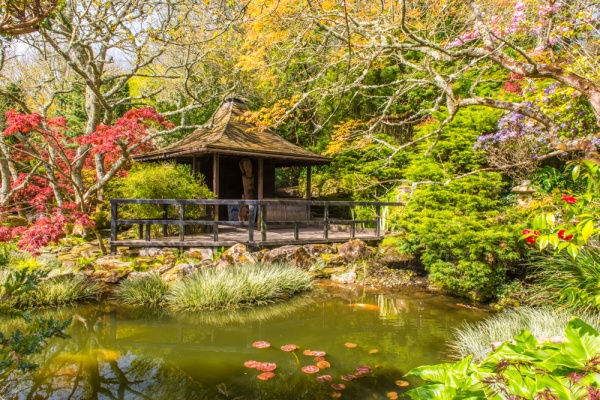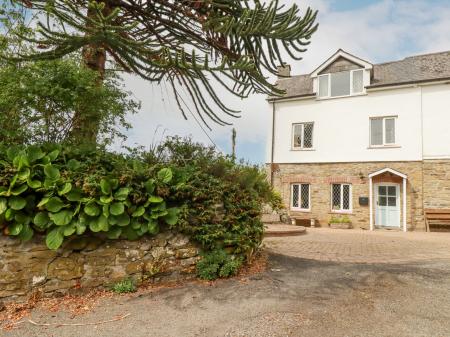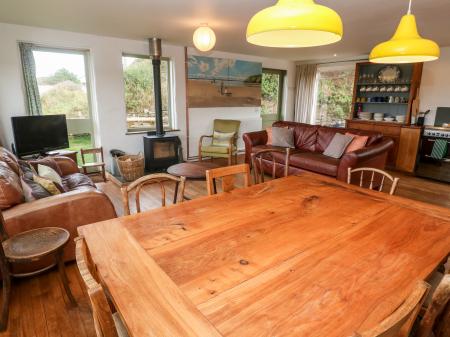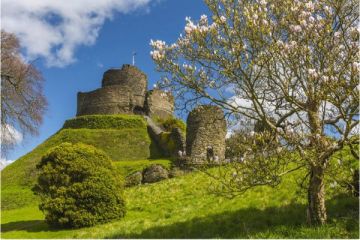
A relatively recent garden, beginning in 1991 beside a popular garden centre, it took 6 years of work to create a special place, reflecting traditional Japanese gardens, centred around the elements of rocks, plants, and water.
The garden entrance is a Shinto 'Torii Gate', a traditional symbol of Japan. One of the most interesting garden areas is a Zen Garden, a place without distractions, a place for contemplation and peace in nature. Weathered stones are set in a carefully prepared gravel bed to emulate the traditional Buddhist garden. The gravel is raked each day so that the garden dies and is reborn anew.
Behind the Zen Garden is a wild woodland, enhancing the sense of seclusion. Nearby is a bamboo grove with trails leading to a small shrine. It's a fascinating comment on human nature that early visitors to the shrine began leaving coins, to the garden owner's surprise. Coins are now collected up daily and donated to Air Ambulance. Near the bamboo grove is a moss garden.

Most visitors gravitate to the water garden, where you will find traditional sculpture formed by a koi pond and pools. Every element of the garden is carefully arranged, with rocks, bonsai, waterfalls, temples, and bridges helping create a meditative atmosphere. One of the major garden buildings is the Teahouse - not to serve cakes and tea, but replicating the traditional Cha-Seki building where tea ceremonies take place.
The sheltered garden site on a valley bottom creates a unique micro-climate where a wide variety of plants thrive, among them azaleas, rhododendrons, camellias, conifers, yew, and bamboo. Its a delightful slice of the Orient in a very British setting.
Our family visited on a lovely spring afternoon, and the gardens were simply wonderful, a place to relax and sit quietly, listening to the sound of the wind and the gently flowing water.
The Japanese Garden is very well signposted from surrounding roads - just follow the brown tourist signs. There is a small parking area outside the garden entrance. Do take the time to walk up the hill to explore the historic medieval church of St Mawgan, which is usually open to visitors.













